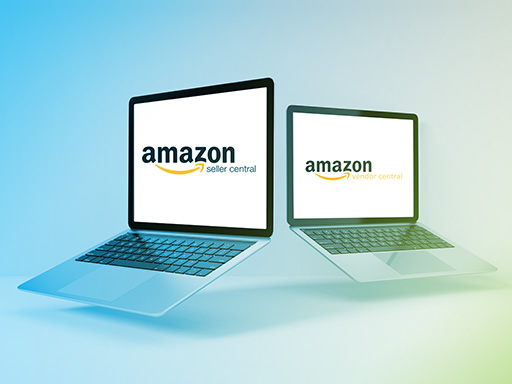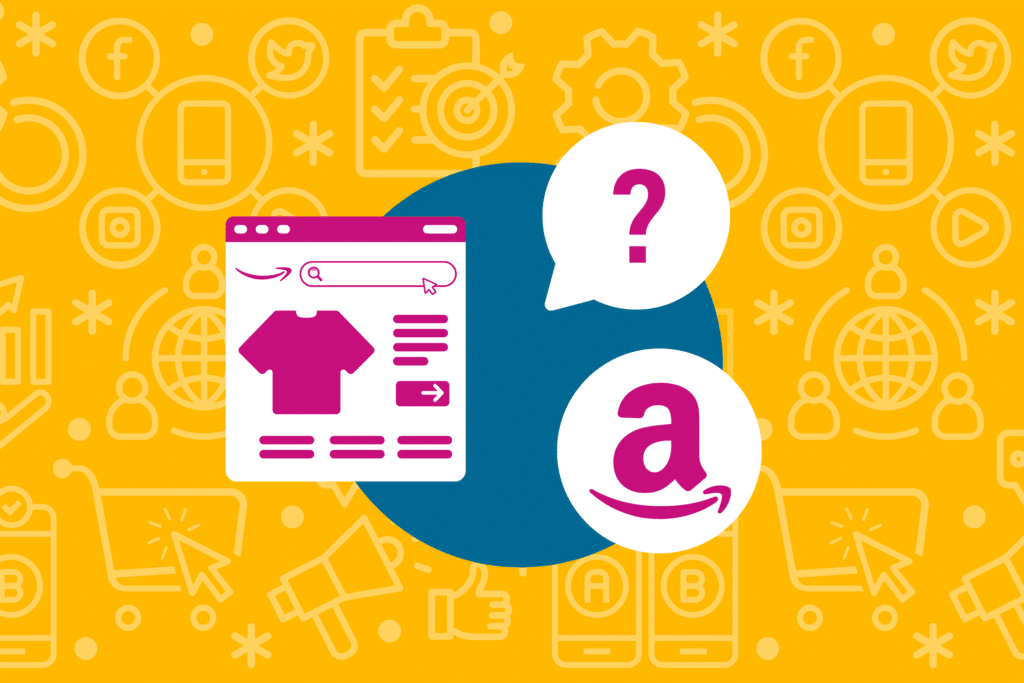Deciding whether or not to start selling your products on Amazon? Confused about the difference between Seller Central and Vendor Central?
To start selling on Amazon, register for a Seller Central account. After that, if your account is successful enough, you may be invited to become a Vendor for Amazon. As a Vendor, you use Vendor Central to manage your account.
Seller Central and Vendor Central are two completely different ways to sell on Amazon—each with its own pros and cons. The decision to transition from Seller to Vendor might not be an easy decision for every store owner.
In this blog, we’ll illustrate the differences between Seller and Vendor Central. By the end, you will be able to decide which path is the best fit for your Amazon business.

Seller Central vs. Vendor Central
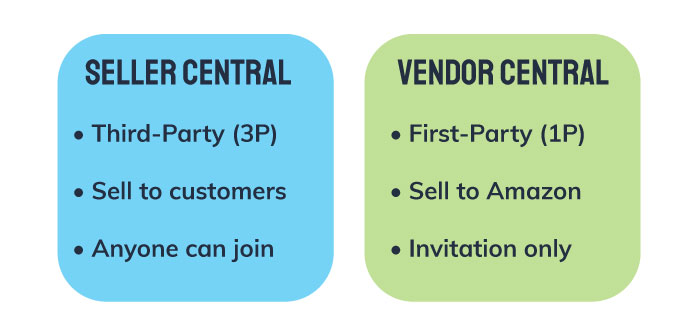
The key distinction between Seller Central and Vendor Central is who sells the product to the customer.
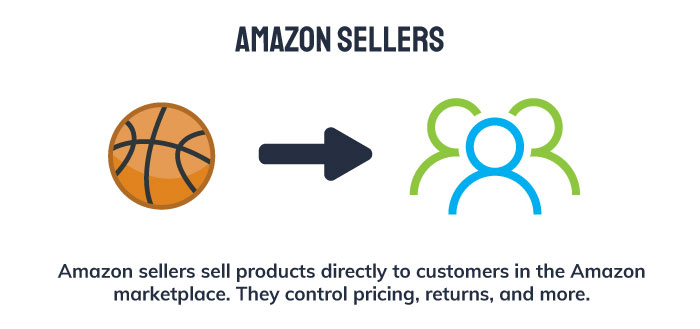
As a Seller, you sell your products directly to customers in the Amazon Marketplace. You are considered a 3rd-party (3P) seller. Sellers use Seller Central to control pricing, manage products, keep track of logistics and much more.
If you generate enough sales to get Amazon’s attention, you may receive an invitation to join Vendor Central (which is invitation only).
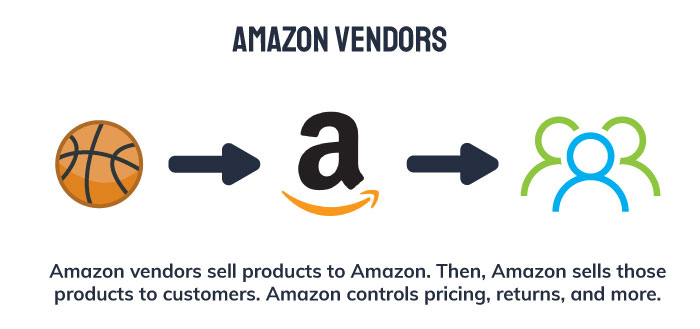
As a Vendor, Amazon sells your products for you. Instead of selling your products to the customer, you sell them to Amazon in bulk, acting as a supplier for Amazon. When you are a vendor, you are a 1st-party (1P) seller. You will be tasked with fulfilling purchase orders directly to Amazon using Vendor Central.
Making the switch to Vendor probably sounds like a no-brainer to most. Being a vendor relieves you of the responsibility of managing your Seller Central account and allows Amazon to take the wheel.
When becoming a Vendor, however, you gain more responsibility in some ways. Fulfilling Amazon’s strict logistical requirements while having less control of the sales process may be less appealing to some store owners.
Let’s take a closer look at the pros and cons of being a seller or vendor and the difference between seller central and vendor central.

Pros of Vendor Central

As a Vendor on Amazon, consumers may have more confidence in your listings. From their perspective, they’re purchasing directly from Amazon, as your products will now have “ships from and sold by Amazon” alongside them.
There are several other benefits that go along with this:
- Straightforward business model: Your responsibilities as a Vendor simply include fulfilling orders to Amazon and delivering within their logistical requirements.
- Amazon Ads Console (Previously AMS): This is Amazon’s PPC advertising platform that can be utilized by Sellers and Vendors, so if you advertise on Amazon, you can continue to access this even when you make the transition.This gives users access to three types of ad campaigns: Sponsored Products, Sponsored Display, and Sponsored Brands.
- Customer Service: Don’t have to deal directly with customers. Amazon handles returns and exchanges.

Cons of Vendor Central
Vendor Central also has its downsides:
- Logistics/Inventory Management: Completely controlled by Amazon. It can be a challenge to meet Amazon’s requirements for order fulfillment and maintain inventory levels.
- Adding to Product Catalog: While the Vendor business model is fairly streamlined, launching new products is one of the factors that’s more of a hassle. The process of adding products is much less in your control, whereas in Seller Central, you can add them immediately on your own and start testing their performance.
Amazon doesn’t have a sales history of your new products, so they may not be willing to risk advertising them in some instances.
- Pricing: Controlled by Amazon. This could mean Amazon sells your products for less than you typically would.

Pros of Seller Central
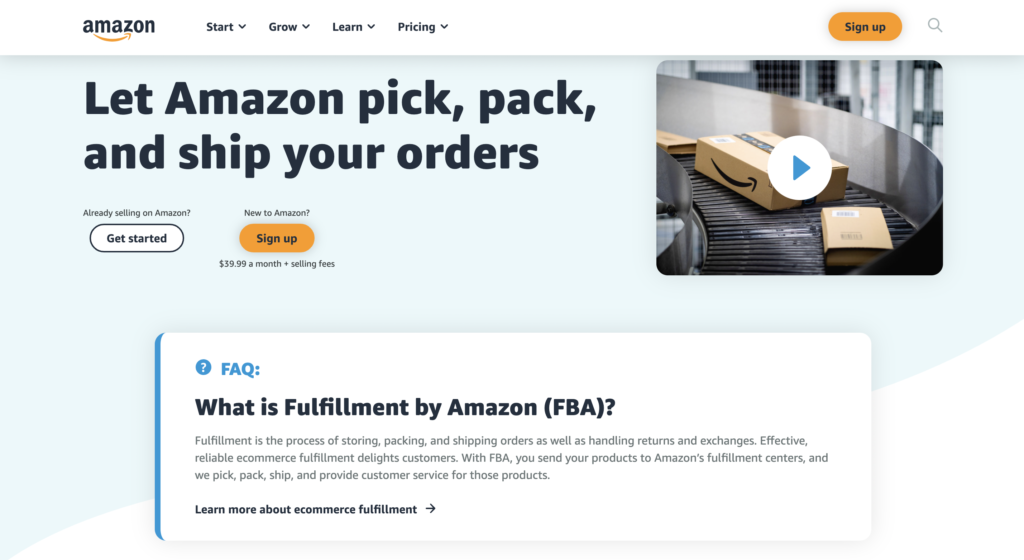
The argument between Vendor and Seller Central comes down to the range of control you want in your account. For business owners that have the resources and expertise to manage effectively on their own, Seller Central may be a better fit.
- Fulfillment Versatility: On the logistics side, Sellers get to choose between three fulfillment options.
- Seller Fulfilled Prime (SFP) gives you the ability to deliver to domestic prime customers directly from your warehouse.
- Fulfillment by Amazon (FBA) is an option where your products are sent to an Amazon Fulfillment Center, and they handle the picking, packing, and shipping, as well as the customer service.
- Merchant Fulfilled Network (MFN) which allows sellers to use a third-party company or their own.
- Pricing: Sellers can price items how they choose, which can be beneficial when monitoring competition pricing.
- Product/Brand Control: In Seller Central you have more control over adding additional products in your account plus how they’re being sold and marketed. Amazon also has a Brand Registry Program for Sellers that need to protect their brand or prevent other unauthorized retailers from selling their products.

Cons of Seller Central
Reasons to consider moving on from Seller Central:
- Fulfillment Expense: For high volume sellers, Amazon’s FBA fulfillment option can be a very convenient option, but there are various fees associated with the service. Not just per-unit fee charges, but storage fees as well.
- Consumer Trust: Not being “sold and shipped by Amazon” could make you a less appealing buying option.
- Managing Sales & Marketing: Managing every aspect of your Seller Central account can be a burden. If you’re looking to streamline your Amazon selling experience, accepting an invitation to Vendor Central is likely your best option.

Are You Better Equipped to be a Seller or a Vendor?
At the end of the day, it depends on your business model and personal preferences.
If you have the means to manage your account efficiently and have a constantly expanding catalog to regulate, Seller Central may be the versatility you need in a selling platform.
If you’re looking for a more hands-off, streamlined approach to selling, playing the role as a wholesaler for Amazon in Vendor Central is the perfect fit for you.
Need help growing your seller central account? We can help you manage your Sponsored ads on Amazon and craft a unique strategy designed around your Amazon business. Get in touch with us here.


